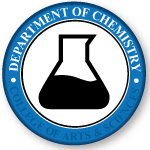Document Type
Article
Publication Date
2003
Publication Title
Journal of Undergraduate Chemistry Research
Volume
3
First Page
127
Last Page
134
Abstract
Structure Property Correlation methods such as regression analysis and pattern recognition are applied to predict the molecular properties of two members of an ampicillin homologous series. The pentyl and hexyl esters of ampicillin are also evaluated for their similarity to other penicillins by use of multiple regression, contingency tables, cluster analysis, correspondence analysis, self organizing tree algorithms, factor analysis, principal component analysis, box plots, and other graphing methods. Other members of the homologous series include methyl, ethyl, propyl, and butyl esters of ampicillin which have been previously synthesized and tested in tissue culture against Escherichia coli. All of the tested esters of ampicillin significantly inhibited penicillin susceptible and ampicillin resistant bacteria, as well as streptomycin resistant bacteria. Drug homologous series has been observed with other antibiotics and medicinal compounds. Homologous series activity is a trend observed for ampicillin by graphing the reciprocal equi-effective concentrations versus the number of carbons comprising the ester group. Regression analysis and contingency tables predict the molecular properties of the hexyl and pentyl esters, while cluster analysis, factor analysis, correspondence analysis, principal component analysis, and tree algorithms correlate them to the parent ampicillin and other members of the ß - lactam class of antibiotics. This work demonstrates the effectiveness of applying numerical analysis methods to drug design and development.
Recommended Citation
Malesa, C.; Stoddard, J.; and Bartzatt, Ronald, "Utilizing Structure Property Correlations to Predict and Analyze Two Derivatives of an Ampicillin Homologous Series" (2003). Chemistry Faculty Publications. 33.
https://digitalcommons.unomaha.edu/chemfacpub/33

